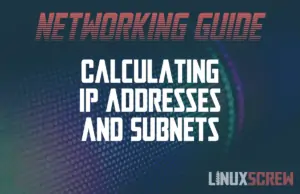fsck to Repair Linux File System Errors [4 Commmon Examples]
Modern computers are incredibly reliable, but things can still go wrong – and the worst thing that can usually go wrong is losing your data – be it important work or your precious photos. Alongside a robust backup system, fsck (File System cheCK) is probably the most important tool you can have on hand to prevent data loss. This tutorial explains how to use fsck to repair file system errors in Linux and takes you through four common examples. fsck verifies the integrity and repairs errors … Read more

![fsck to Repair Linux File System Errors [4 Commmon Examples] 1 fsck to Repair Linux File System Errors](https://cd.linuxscrew.com/wp-content/uploads/2021/01/fsck-to-Repair-Linux-File-System-Errors-300x194.png)


![How to Install Ubuntu Desktop [Beginner's Guide With Screenshots] 4 How to Install Ubuntu Desktop](https://cd.linuxscrew.com/wp-content/uploads/2021/01/How-to-Install-Ubuntu-Desktop-300x194.png)
![Linux rsync Command, Syntax and Examples [Guide] 28 Linux rsync Command](https://cd.linuxscrew.com/wp-content/uploads/2020/12/Linux-rsync-Command-300x194.png)

![STOP Using the Linux ifconfig Command [Here's Why] 30 ip command](https://cd.linuxscrew.com/wp-content/uploads/2020/12/ip-command-300x194.png)
![How to Update Ubuntu Linux [Server and Desktop] 31 Update Ubuntu Linux](https://cd.linuxscrew.com/wp-content/uploads/2020/12/Update-Ubuntu-Linux-300x194.png)

![Using the SCP Command to Securely Copy Files [Examples] 33 Using the SCP Command](https://cd.linuxscrew.com/wp-content/uploads/2020/12/Using-the-SCP-Command-300x194.png)